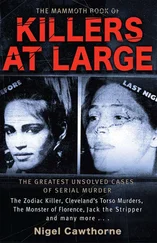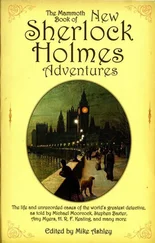‘Indeed,’ I said. ‘And there is one more consoling thought: that while I shall most certainly continue to chronicle your remarkable cases, nobody will ever write another word about the exploits of Professor Moriarty.’
The Death of Moriarty
Peter Guttridge
The National Archives in Kew, London contain many secrets. Some are revealed in full through the diligence of researchers, others remain tantalisingly out of reach because a single clue is all that can be found. And then there are those that fall somewhere in-between – a short series of clues that stir the embers but aren’t sufficient to take fire.
Take the 1891 Census of the population of the United Kingdom. No need to visit Kew to explore it; it’s online. Type in the name ‘James Moriarty’. There are just eighteen men and boys with that name in the entire population in that year. Their occupations, ages and places of birth are listed.
Labourers in field and factory; two soldiers (a sergeant and a private); young scholars and those too young for school. Seven born in Ireland, one in Scotland, nine in various English counties and one in London. In Highgate. Where in 1891 he also resides, though it is not evident if it is at the same address at which he was born. He stands out, too, because he is an educated man. A professor.
The census took place before the famous struggle in 1891 at the Reichenbach Falls that saw Professor James Moriarty and Sherlock Holmes plunge to their deaths. (Although the death of Sherlock Holmes was, of course, greatly exaggerated.)
Little is known about Moriarty but his rarefied work, The Dynamics of an Asteroid , is famous. Famous but unread because unobtainable. Even that behemoth of book-selling, Amazon, doesn’t sell or resell The Dynamics of an Asteroid .
However, there are references galore on Google, all ultimately referring back to the single mention of it in Dr Watson’s ‘The Final Problem’, his account of the 1891 death of Sherlock Holmes and Professor Moriarty.
Wade through the pages of references to it on Google and on the ninth page there is mention of a Conference on New Methods in Astrodynamics, held in January 2003 in Pasadena, California. A paper is available on PDF entitled Geometric Mechanics and the Dynamics of Asteroid Pairs.
It turns out the dynamics of an asteroid pair, consisting of two irregularly shaped asteroids interacting through their gravitational potential, is an example of a full body problem (FBP) in which two or more bodies interact. There is a footnote (page three of the paper) that states: ‘as first predicated in James Moriarty’s Dynamics of an Asteroid ’. Somebody has clearly read it.
The National Archives farm out online access of their records to various third parties. For a fee, through one of them, Ancestry. co.uk, you can see birth and death certificates.
Professor Moriarty’s year and place of birth are listed on the census return but there is no birth certificate for him in the Archives, even though it should hold the complete parish records for the Highgate area. It is simply not there.
The probability is there will be nothing different when it comes to his death certificate, even though his year of death is known. On the homepage for death certificates issued in 1891 the Archives has a digest of three or four news events from that year. Events striking enough to distract any researcher from a quest for a specific death certificate.
The Great Blizzard of 1891 in the south and west of England killed two hundred and twenty people on land and many more at sea. Extensive snowdrifts on land, vicious storms on the sea off the south coast. Fourteen ships were sunk, including the SS Utopia , a steamship built in 1874 by Robert Duncan & Co of Glasgow, heading from the Hook of Holland to England.
It collided with HMS Anson . The Anson smashed a five-metre hole in the Utopia’ s hull. The holds were almost immediately flooded, the ship tipped over and within twenty minutes the Utopia was swallowed by the sea.
Out of 880 passengers and crew members, 562 died or went missing, presumed dead; 318 survived. The click-through on the homepage is to a facsimile of a whole page of The Times given over, in tiny print, to the names of all passengers and crew members in alphabetical order, with an indication after the names about whether they survived, were known to be dead or had gone missing.
Under the letter ‘M’ a Professor James Moriarty and a Colonel Sebastian Moran are listed as two of the passengers who survived the disaster.
This disaster happened months after the struggle at the Reichenbach Falls. Unsurprisingly, there is no death certificate for a Professor James Moriarty – or any Moriarty – for that year. But then he does appear to have cheated death twice.
But not for long. For the death certificate of a Professor James Moriarty is listed in the following year. On 1 February 1892. The place of death is given as the London Hospital, Whitechapel Road, Whitechapel, E1. The cause of death is given as botulism.
Botulism is something that needs looking up. It’s a particularly horrible form of food poisoning caused by the botulinum toxin, the most lethal neurotoxin known. Botulism is deadly to humans and animals if untreated. Death is generally caused by respiratory failure due to paralysis of the respiratory muscles. Not a nice way to go.
The botulinum toxin is produced by the bacterium clostridium botulinum , which occurs in soil. People ingest botulinum toxin from food grown in the soil that is contaminated with the bacterium. Intriguingly, in light of Sherlock Holmes’s retirement into beekeeping, honey contains it, but it is only lethal in honey to infants.
These days the toxin is more usually linked to a cosmetic procedure that thousands readily submit to. It works by injections that paralyse the muscles that cause frowning or, indeed, any expression of emotion. Wikipedia is not entirely to be trusted, but it says there are four forms of botulinum toxin used commercially for cosmetic procedures for those people who do not wish to show emotion on their faces. The best known is Botox.
Dismissing the notion that Professor Moriarty died from a cosmetic procedure gone wrong, the idea he died from food poisoning is, to be frank, even more bathetic.
So far so intriguing, but how to take these pieces of information further? Well, The Times is an invaluable resource at Kew – or online if you are linked to an educational establishment wealthy enough to pay the annual fee for full access to its digitised archive.
Browsing through every edition for, say, the previous three months from the date of Moriarty’s death brings hours of fascinating distractions, but also an account, on 18 January 1892, of a world championship chess match in Simpson’s chess rooms on the Strand.
In their time together, Sherlock Holmes and Dr Watson repaired regularly to the restaurant at Simpson’s-in-the-Strand for good English fare – still today it is celebrated for its roast beef. So perhaps it is no surprise that Dr Watson would attend a chess match there. More surprising is what happened.
Let the newspaper’s chess correspondent tell the story, or as much of it as he observed:
The match between Velikovsky A. K. and Sturgess J. P. was disrupted for a time when a celebrated member of the audience was taken ill. The well-known chronicler of the exploits of Sherlock Holmes, Dr James Watson, collapsed in a booth he was sharing with a companion.
This correspondent became aware of Dr Watson’s collapse when he saw his companion trying to revive him. Simpson’s staff members quickly came to his aid, as did this correspondent. His companion, who gave no name, explained that they had been watching the tournament and engaging in desultory conversation when the doctor had suddenly slumped forward, unconscious, on the table between them.
Читать дальше










